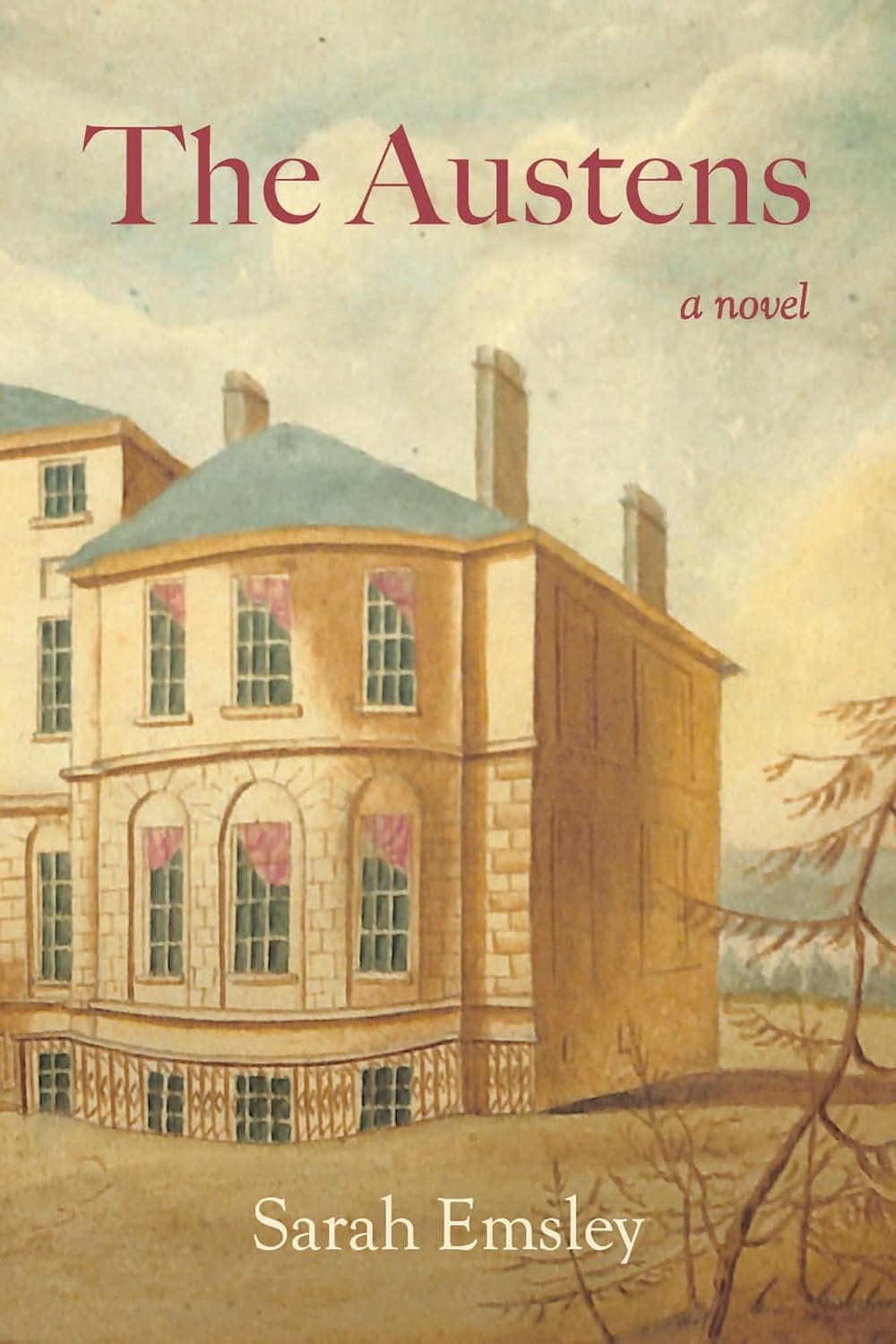The Austens: A Novel by Sarah Emsley
Reviewed by Ian Colford
In The Austens, her debut novel, Sarah Emsley imagines Jane Austen’s life and times during a period (1802-1814) of great personal upheaval, but also one of significant creative accomplishment.
Though The Austens delves deeply into many of Jane’s literary, social and domestic activities from this period, much of Emsley’s engrossing narrative is concerned with the relationship of Jane with sister-in-law Frances Palmer (Fanny), who in 1807 married Jane’s brother Charles. Jane (1775-1817) was born second to the last of eight siblings, Charles being the youngest. Charles, an officer in the Royal Navy during the Napoleonic Wars, followed a rising career path to postings around the world (including Halifax, Nova Scotia), taking his growing family with him, and thus Jane and Fanny’s relationship is chronicled largely through their correspondence, though they did meet on several occasions.
“The story of Jane and Fanny’s friendship, their fears and joys, triumphs and tribulations, is based on a spotty historical record that Emsley leavens with appropriate creative touches to fill in the blanks and add dramatic urgency.”
Since she had no money of her own, the circumstances of Jane’s life placed her in a precarious position—one she shared with many single women of the time, including her sister Cassandra—of being almost complete dependent on the generosity of her family. It was a situation she was painfully aware of through years of frustration as she struggled to get her novels published and prove her worth. Jane also encountered the same conundrum many of her heroines faced: whether to marry a man she did not love in order to relieve her family of this burden.
As the story opens, Jane, at age 27, having years earlier completed a novel manuscript publishers had rejected (an early version of Pride & Prejudice), is considering the merits of working as a governess to make money, and being dissuaded from this notion by her sister. Soon afterward she is approached by a man of some means whom she does not find attractive (she bluntly describes him as “dull”) who asks for her hand in marriage, ultimately turning him down, and with this decision committing herself fully to her writing. By contrast, Fanny marries George, committing herself fully to her husband and motherhood. When they begin exchanging letters, Fanny shows keen interest in and appreciation for Jane’s literary efforts, and as time passes, even though they do not always see eye to eye, the two become close.
The story of Jane and Fanny’s friendship, their fears and joys, triumphs and tribulations, is based on a spotty historical record that Emsley leavens with appropriate creative touches to fill in the blanks and add dramatic urgency. Crucial to the novel’s success is the character of Jane, who speaks in a voice of her time, and who combines empathy, emotional warmth, sparkling wit, and uncompromising intelligence into a captivating mix that only the most curmudgeonly reader would not find compelling.
Sarah Emsley’s The Austens is a remarkable work of historical reconstruction as well as a suspenseful, informative and often very moving entertainment, one that you don’t have to be a Jane Austen enthusiast to enjoy.
About the Author
Sarah Emsley has published books and essays on Jane Austen, and her critical edition of Edith Wharton’s 1913 novel The Custom of the Country was published by Broadview Press. She lives in Halifax, Nova Scotia, Canada with her family. The Austens is her debut novel.
About the Reviewer
Ian Colford was born, raised, and educated in Halifax. His reviews and stories have appeared in many print and online publications. He is the author of two collections of short fiction and two novels, and is the recipient of the Margaret and John Savage First Book Award for Evidence.
Book Details
Publisher : Pottersfield Press
Publication date : Sept. 15 2025
Language : English
Print length : 286 pages
ISBN-10 : 1990770878
ISBN-13 : 978-1990770876




